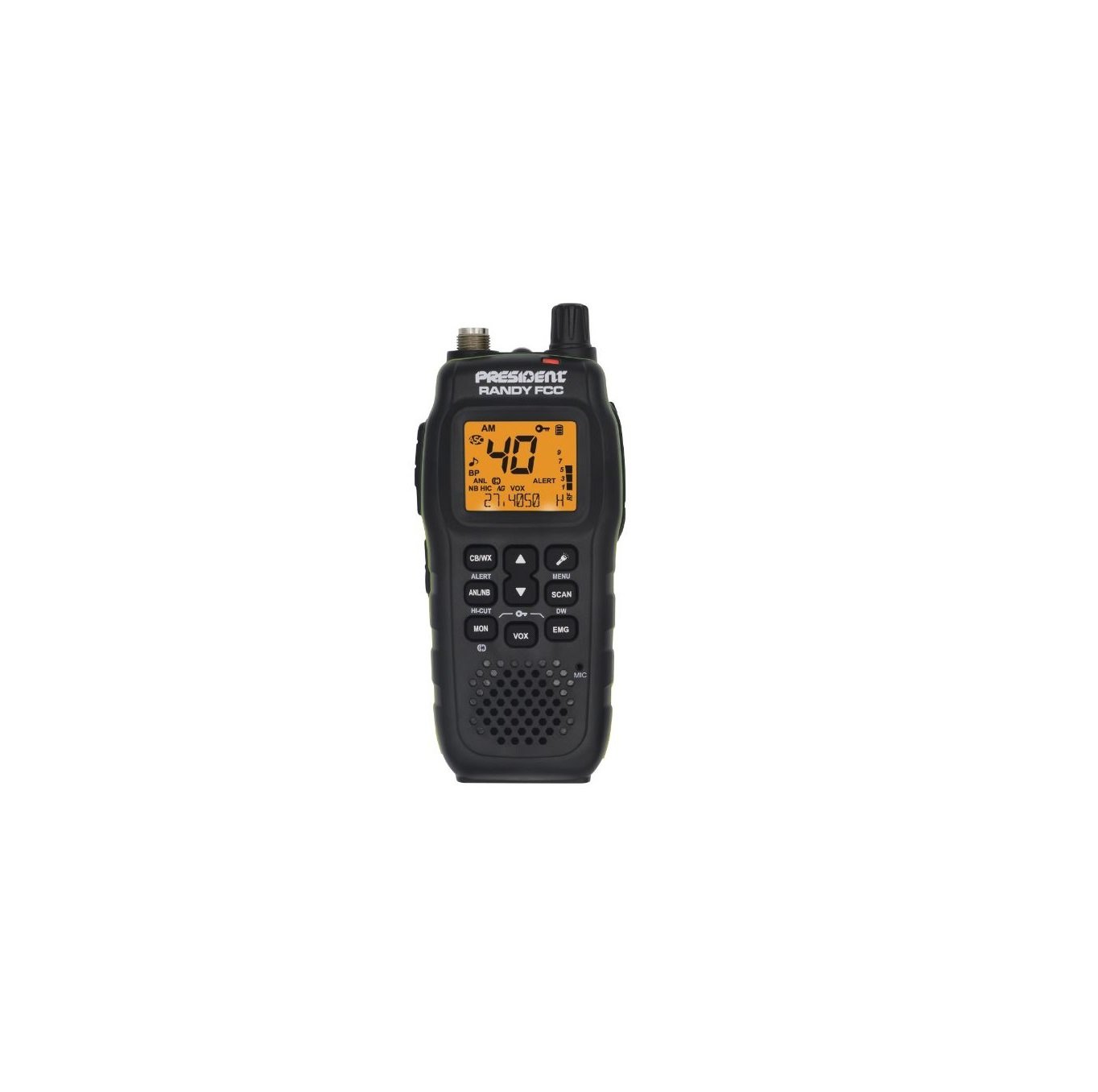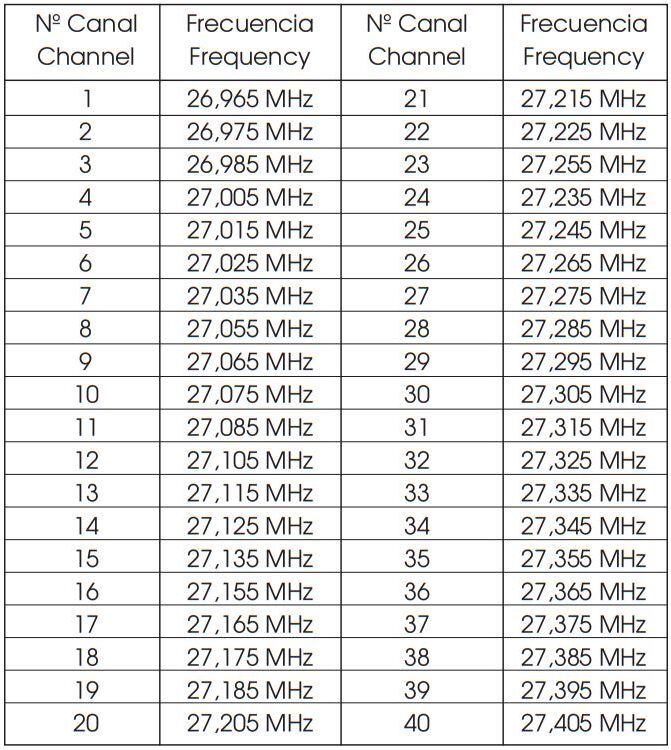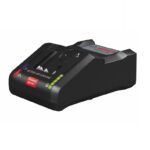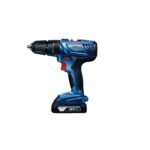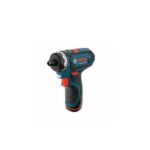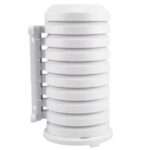President TXUS611 RANDY FCC Handheld or Mobile
CB Radio User Manual
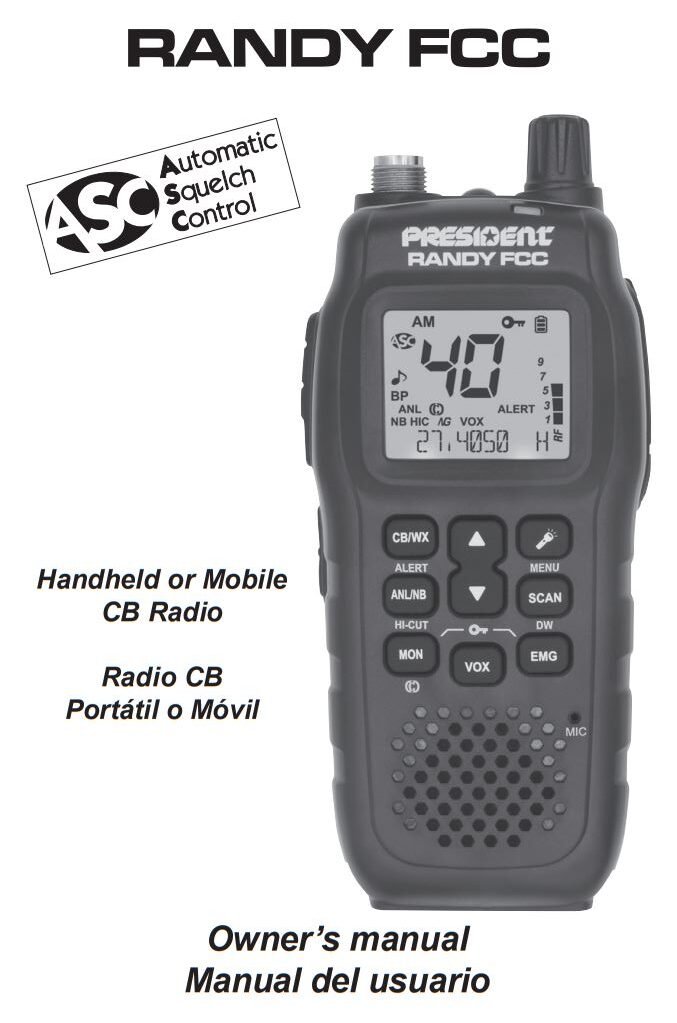
Contents / Contenido: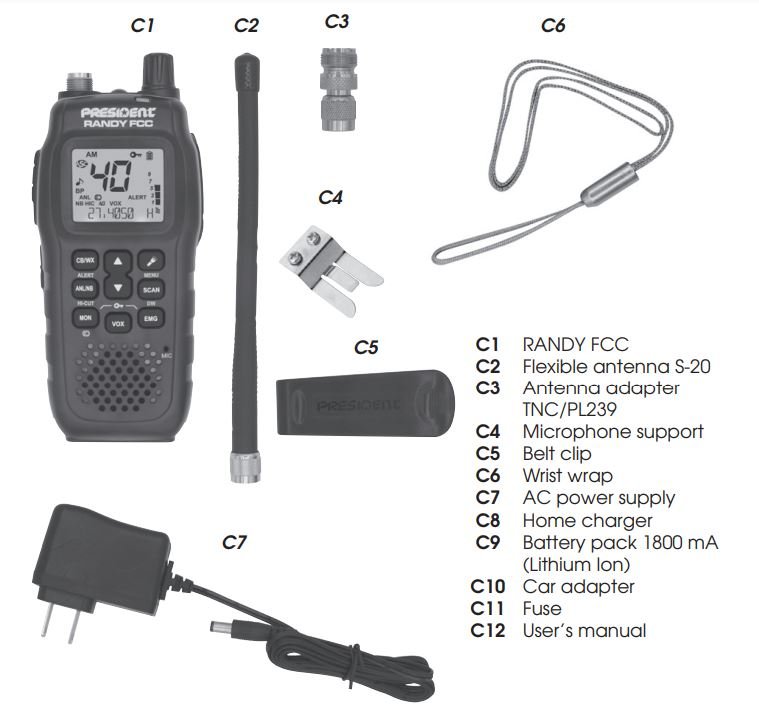
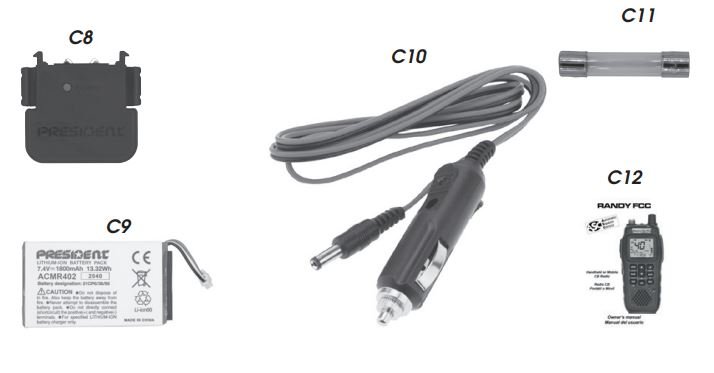 Your RANDY FCC at a glance
Your RANDY FCC at a glance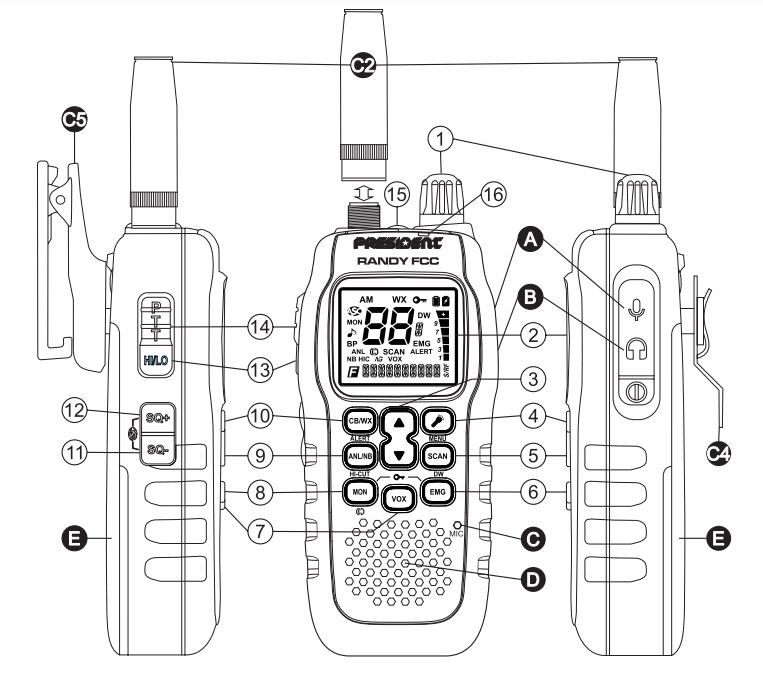 Un vistazo a vuestro PRESIDENT RANDY FCC
Un vistazo a vuestro PRESIDENT RANDY FCC
C1 RANDY FCC
C2 Antena flexible S-20
C3 Adaptador de antena TNC/PL239
C4 Soporte de micrófono
C5 Pinza de cinturón
C6 Correa de mano
C7 Suministrado de potencia CA
C8 cargador
C9 Batería 1800 mA Litio Ion
C10 Adaptador de coche
C11 Fusible
C12 Manual del usuario
Please refer to our website : www.president-electronics.us for optional accessories.
Consulte nuestro sitio: www.president-electronics.us para los accesorios opcionales.
⚠️WARNING: This product can expose you to chemicals including Lead, which is known to the State of California to cause cancer and birth defects or other reproductive harm. For more information go to www.P65Warnings.ca.gov.
AVERTISSEMENT : Ce produit peut vous exposer à des agents chimiques, y compris le plomb, identifiés par l’État de Californie comme pouvant causer le cancer et des malformations congénitales ou autres effets nocifs sur la reproduction. Pour de plus amples informations, prière de consulter le site www.P65Warnings.ca.gov.
WARNING! Before using, be careful never to transmit without first having connected the flexible antenna (C2), or, with a CB antenna*, without having set the SWR (Standing Wave Ratio) ! Failure to do so may result in destruction of the power amplifier, which is not covered by the warranty. |
*in mobile configuration when the flexible antenna (C2) has been removed and replaced by a CB antenna using the TNC/PL239 adapter (C3).
The warranty of this transceiver is valid only
in the country of purchase.
Welcome to the world of the new generation of CB radios. The new PRESIDENT range gives you access to top performance CB equipment. With the use of up-to-date technology, which guarantees unprecedented quality, your PRESIDENT RANDY FCC is a new step in personal communication and is the surest choice for the most demanding of professional CB radio users. To ensure that you make the most of all its capacities, we advise you to read carefully this manual before installing and using your PRESIDENT RANDY FCC.
MOBILE CONFIGURATION
1) ANTENNA INSTALLATION
– Remove the flexible antenna (C2) from the device.
– Replace the antenna (C2) with the antenna adapter (C3)
– Connect the CB antenna to the antenna adapter (C3).
- Choosing your antenna
– For CB radios, the longer the antenna, the better its results. Your dealer will be able to help you with your choice of antenna. - Mobile antenna
– Must be fixed to the vehicle where there is a maximum of metallic surface (ground plane), away from windscreen mountings.
– If you already have a radio-telephone antenna installed, the CB antenna should be higher than this.
– There are two types of antenna: pre-regulated which should be used on a good ground plane (e.g. car roof or lid of the boot), and adjustable which offer a much larger range and can be used on a smaller ground plane (see § 3, ADJUSTMENT OF SWR).
– For an antenna which must be fixed by drilling, you will need a good contact between the antenna and the ground plane. To obtain this, you should lightly scratch the surface where the screw and tightening star are to be placed.
– Be careful not to pinch or flatten the coaxial cable (as this runs the risk of break down and/or short-circuiting).
– Connect the antenna to the adapter (C3). - Fixed antenna
– A fixed antenna should be installed in a clear space as possible. If it is fixed to a mast, it will perhaps be necessary to stay it, according to the laws in force (you should seek professional advice). All PRESIDENT antennas and accessories are designed to give maximum efficiency to each CB radio within the range.
2) BASIC OPERATIONS TO BE CARRIED OUT BEFORE
OUTPUT RADIUS PATTERN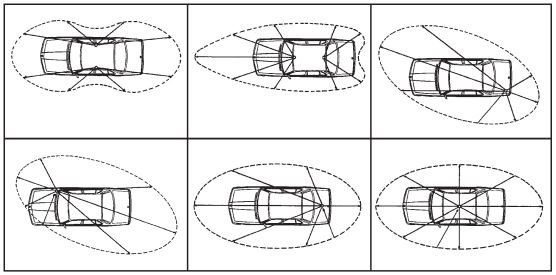 USING YOUR SET FOR THE FIRST TIME (without transmitting and without using the «push-to-talk» switch)
USING YOUR SET FOR THE FIRST TIME (without transmitting and without using the «push-to-talk» switch)
- Check the antenna connections.
- Turn the set on by turning the Power knob (1) clockwise.
- Set the squelch OFF. See § 11 and 12 page 14.
- Adjust the volume to a comfortable level.
- Go to channel 20 by using the channel selectors 🔼 or 🔽 key (3).
3) ADJUSTMENT OF SWR (Standing wave ratio)
WARNING: This must be carried out when you use your CB radio for the first time (and whenever you re-position your antenna). The adjustment must be carried out in an obstacle-free area.
* Adjustment with external SWR-meter (e.g. TOS-1 PRESIDENT)
- To connect the SWR meter :
– Connect the SWR meter between the CB radio and the antenna as close as possible to the CB (use a maximum of 15.75 inches (40 cm), type President CA-2C). - To adjust the SWR meter:
– Set the CB on channel 20.
– Put the switch on the SWR-meter to position FWD (calibration).
– Press the «push-to-talk» switch on the microphone to transmit.
– Bring the index needle to 🔽 by using the calibration key.
– Change the switch to position REF (reading of the SWR level). The reading on the Meter should be as near as possible to 1. If this is not the case, re-adjust your antenna to obtain a reading as close as possible to 1. (An SWR reading between 1 and 1.8 is acceptable).
– It will be necessary to re-calibrate the SWR meter after each adjustment of the antenna.
WARNING: In order to avoid any losses and attenuations in cables used for connection between the radio and its accessories, PRESIDENT recommends to use a cable with a length less than 118.11 inches (3 m).
Your CB is now ready for use.
HANDHELD CONFIGURATION
1) INSTALLATION
– Screw the flexible antenna (C2) on the device.
– Check that the battery is fully charged. See § CHARGING THE RANDY FCC page 20.
Your CB is now ready for use.
CONTROLS AND FUNCTIONS
C2 Flexible antenna
A External microphone plug
B External speaker plug
C Internal microphone
D Internal speaker
E Battery Pack Door
C4 Microphone Support
C5 Belt clip
- 1 On/Off – Volume
- LCD
- UP 🔼 / DOWN 🔽 Keys
 key – MENU key
key – MENU key- SCAN key – DW (Dual Watch) key
- EMG (Emergency) key
- VOX key
- MON (Monitor) key –
 Compander key
Compander key - ANL/NB key – HI-CUT key
- CB/WX key – ALERT key
- SQ- (Squelch -) key
- SQ+ (Squelch +) key
- HI/LO (High/LOW) transmitting power key
- PTT (Push To Talk) switch
- FLASHLIGHT
- LED Rx and TX
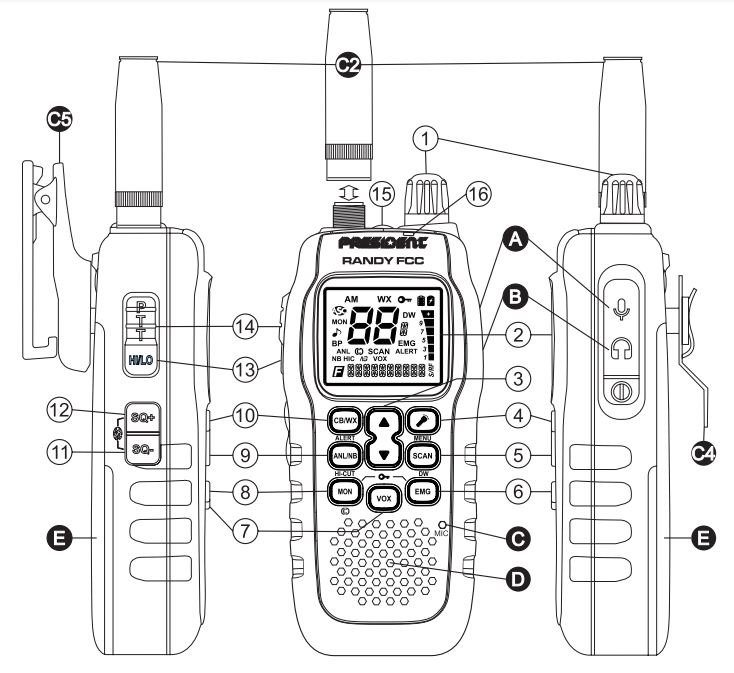
FUNCTION DESCRIPTION
1) ON/OFF ~ VOLUME
– Turn the On/Off-Volume knob (1) clockwise for setting the unit on and increase the volume. If the KEY BEEP function is activated, 4 tones sound when you turn the CB radio on.
– Turn the On/Off-Volume knob (1) counter clockwise for decreasing the volume and setting the unit off.
See § KEY BEEP on page 17. See ECO MODE page 17.
2) DISPLAY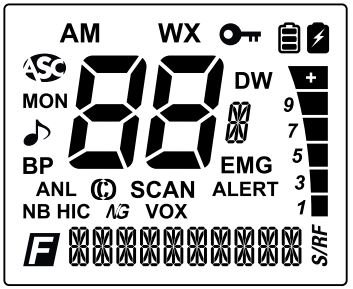

3) CHANNEL SELECTOR: 🔽/🔼 keys
– Press the 🔽 (3) button to decrease a channel.
– Press the 🔼 (3) button to increase a channel.
A «beep» sounds each time the channel changes, if the KEY BEEP function is activated. See § KEY BEEP page 17.
4) ![]() ~ MENU
~ MENU
![]() (short press)
(short press)
– Turn on the unit.
– Short press the ![]() key (4) to switch on the flashlight.
key (4) to switch on the flashlight.
– Quickly press the 🔼 or 🔽 key (3) to select between the 4 possible lights :![]() – Short press the
– Short press the ![]() key (4) to switch off the flashlight.
key (4) to switch off the flashlight.
MENU (long press)
- Long press the MENU key (4) to enter the MENU.
 appears on the display.
appears on the display. - Press the 🔼 or 🔽 key (3) to select the menu to be set.
- Short press the MENU key (4) to validate the selected menu. The parameter of the menu blinks.
- Press the 🔼 or 🔽 key (3) to change the parameter.
- Press the MENU key (4). A short press to validate and stay in the MENU or a long press to validate and exit the MENU.
- If no key is pressed, the unit exits the MENU after 10 seconds without saving the modifications.
See § MENU SETTING page 16.
5) SCAN ~ DW
SCAN (short press)
Short press the SCAN key (5) to activate the SCAN function. Press the 🔼 key (3) to scan in increasing order. Press the 🔽 key (3) to scan in decreasing order.
The scanning stops as soon as there is a busy channel. The scanning automatically starts 3 seconds after the end of the transmission and no key is activated during 3 s. The scan also restarts in increasing order with the 🔼 key (3), or in decreasing order with the 🔽 key (3).
When the SCAN function is activated, “SCAN” blinks on the display.
CB channel scan
In CB mode (see § CB/WX page 14), the SCAN function scans the 40 CB channels.
Weather channel scan
In WX mode (see § CB/WX page 14), the SCAN function scans the 7 WX channels.
Note: The weather channel SCAN can run in the background while using the CB.
In the current mode, press the PTT switch (14) to deactivate the SCAN function. “SCAN” disappears on the display.
DW (Dual Watch) (long press)
Long press the DW key (5) to activate the DW function. Allows to alternate between the active and a second (customizable) channel. When the function is active, “DW” appears on the display.
Press the PTT switch (14) to exit the DW function.
See menu DW (Dual Watch) SETTING page 19.
6) EMG ~ EMG SET
EMG (short press)
Emergency channel is automatically selected by pressing the EMG Key (6). First short press to call the first emergency customisable channel. Second short press to call the second emergency customisable channel. “EMG” appears on the display when an emergency channel is activated. Third short press to go back to the current channel. “EMG” disappears on the display.
See § KEY LOCK page 16.
EMG SET (long press)
Priority channels can be assigned to any channel. To define a new priority channel:
- Press shortly the EMG key (6) until you select the priority channel to be customized. “EMG” is displayed on the LCD.
- Press the EMG key (6) for one second to set the selected emergency channel.
 is displayed. “EMG” blinks.
is displayed. “EMG” blinks. - Use the 🔼 or 🔽 key (3) to select the new channel. 4. Press the PTT switch (14) to confirm your choice. The unit returns to CB mode.
- If no key is pressed for 10 seconds, the unit automatically exits the setting function to return to CB mode.
The default priority channels are channel 09 (1) and channel 19 (2).
See menu EMG SETTING page 18.
7) VOX (short press)
The VOX function allows transmitting by speaking into the original microphone (or in the optional vox microphone) without pressing the PTT switch (14). The use of an optional vox microphone connected to the unit (A) disables the original microphone. Press shortly the VOX key (7) in order to activate the VOX function. «VOX» appears on the display. A new press on the VOX (7) key disables the function, «VOX» disappears.
See menu VOX SETTING page 19.
8) MONITOR ~ COMPANDER
MONITOR (short press)
This function allows to monitor the channel despite the squelch. When the ![]() is active or when the level of the manual squelch is high, press the MBON key (8) to hear the active channel.
is active or when the level of the manual squelch is high, press the MBON key (8) to hear the active channel.
See § KEY LOCK page 16.
COMPANDER ![]() (long press)
(long press)
Long press the ![]() key (8) to activate/deactivate the COMPANDER. When the COMPANDER is active,
key (8) to activate/deactivate the COMPANDER. When the COMPANDER is active,![]() appears on the LCD.
appears on the LCD.
This switchable filter allows to improve the reception mode.
9) ANL/NB ~ HI-CUT
ANL/NB (short press)
Short press the ANL/NB key (9) to activate/deactivate the filters in this order :![]() The activated filter is shown on the display.
The activated filter is shown on the display.
ANL – Automatic Noise Limiter: This filter allows the reduction of background noises and some reception interferences.
NB – Noise Blanker: This filter allows the reduction of back ground noise, and some reception interference.
HI-CUT (long press)
Long press the HI-CUT key (9) to activate/deactivate the HI-CUT filter. “HIC” appears on the display when the filter is active.
Hi-Cut: Eliminates high frequency interferences. Has to be used in accordance with the reception conditions.
10)CB/WX ~ ALERT
CB/WX (short press)
Short press the CB/WX key (10) to alternate between CB or WX (Weather Channel) mode. “WX” appears on the display if the Weather Channel mode is active.
WX (Weather Channel) Mode
CB functions are not allowed in WX mode. The WX mode allows you to hear weather informations. When the mode is activated, use the 🔼 or 🔽 key (3) to move through the 7 weather channels and find the active channel in your local area. See table page xxx.
The display shows the selected weather channel and if the unit receives a signal,![]() icon appears.
icon appears.
ALERT (long press)
This function only works in CB mode. It does not work in WX mode.
Press and hold the ALERT key (10) for 1 second to activate/ deactivate the ALERT function. When the function is ON and a tone is detected at the selected weather channel, then the unit sounds a “siren” alert. “ALERT” and the WX channel blink on the display. The unit cancels CB mode and goes to WX mode. While the “siren” sounds, press any key to stop the sound, “ALERT” and the “WX channel” stop blinking on the display.
Note: The “siren” alert sounds when ALERT is detected in the selected WEATHER channel only. Use first SCAN function in WX mode (see § SCAN page 11) for detect alerts in all the weather channels.
11)MANUAL SQUELCH- (short press)
Short press the SQ- key (11) to decrease the level of the manual squelch.
12)MANUAL SQUELCH+ (short press)
Short press the SQ+ key (12) to increase the level of the manual squelch.
Manual squelch: of /![]() or 34 levels from
or 34 levels from ![]()
11 + 12 ) ASC (Automatic Squelch Control)
Worldwide patent, a PRESIDENT exclusivity
ASC suppresses undesirable background noises when there is no communication. Squelch does not affect neither sound nor transmission power, but allows a considerable improvement in listening comfort.
Press simultaneously the SQ- (11) and SQ+ (12) keys to activate/ deactivate the ASC function. ![]() appears on the display when the function is active. No repetitive manual adjustment and a permanent improvement between the sensitivity and the listening comfort when ASC is active.
appears on the display when the function is active. No repetitive manual adjustment and a permanent improvement between the sensitivity and the listening comfort when ASC is active.
13)HI/LO TRANSMITTING POWER (short press)
Short press the HI/LO key (13) to alternate between high and low transmitting power. “H” or “L” is displayed to indicate the selected level. See ECO MODE page 17.
14)PTT SWITCH
Transmitting Mode (PTT switch pressed)
Press the PTT switch (14) to transmit. The LED (16) lights up red.
Receiving Mode (PTT switch released)
The LED (16) lights up green in receiving mode. You can hear the signal on the speaker. The bargraph indicates the emission (RF) or reception (S) level.
TOT (Time Out Timer)
If the PTT swith (14) is pressed longer than 3 minutes, the active channel start blinking, the transmission ends. The time-out tone will sound until the PTT switch (14) is released.
15)FLASHLIGHT
See § ![]() page 11.
page 11.
16)LED
See § PTT SWITCH page 15.
6 + 8) KEY LOCK (EMG + MON keys)
Long press simultaneously the EMG (6) and MON (8) keys to activate/deactivate the KEY LOCK function. When the function is active, “ ![]() ” appears on the display.
” appears on the display.
MENU SETTING
See § MENU page 11.
1) COLOR
- Long press the MENU key (4) to enter the MENU.
 appears on the display.
appears on the display. - Press the 🔼 or 🔽 key (3) to select the
 menu.
menu. - Short press the MENU key (4) to validate. The current color blinks.
- Press the 🔼 or 🔽 key (3) to select the color : Orange (OR ), Green (GR ), Blue ( BL), Cyan (CY ), Yellow ( YE), Purple ( PU) or Ligth Cyan ( LI)

- Press the MENU key (4). A short press to validate and stay in the MENU or a long press to validate and exit the MENU.
- If no key is pressed, the unit exits the MENU after 10 seconds without saving the modifications.
Default Color is OR(Orange).
2) ROGER BEEP
The Roger Beep sounds when the PTT switch (14) is released in order to let your correspondent speak. Historically as transceiver is a “simplex” communication mode, it is not possible to speak and to listen at the same time (as it is the case with a telephone). Once someone had finished talking, he said “Roger” to let his correspondent know that it was his turn to talk. The word “Roger” has been replaced by a significant beep. Which is where the words “Roger beep” originate from. When the function is active, the icon ![]() appears on the display.
appears on the display.
- Long press the MENU key (4) to enter the MENU.
 appears on the display.
appears on the display. - Press the 🔼 or 🔽 key (3) to select the ROGER BEEP menu.
- Short press the MENU key (4) to validate. The current value blinks.
- Press the 🔼 or 🔽 key (3) to deactivate OF, or select between the 6 melodies for the ROGER BEEP from 01 to 06
- Press the MENU key (4). A short press to validate and stay in the MENU or a long press to validate and exit the MENU.
- If no key is pressed, the unit exits the MENU after 10 seconds without saving the modifications.
Default value is OF.
3) KEY BEEP
When the function is activated, a beep sounds when a key is pressed, by changing the channel etc. “BP” appears on the display when the function is active.
- Long press the MENU key (4) to enter the MENU. appears on the display.
- Press the 🔼 or 🔽 key (3) to select the KEY BEEP menu.
- Short press the MENU key (4) to validate. The current value blinks.
- Press the 🔼 or 🔽 key (3) to activate On or deactivate OF the KEY BEEP function.
- Press the MENU key (4). A short press to validate and stay in the MENU or a long press to validate and exit the MENU.
- If no key is pressed, the unit exits the MENU after 10 seconds without saving the modifications.
Default value is On.
4) ECO MODE
This function allows to save your battery. The unit goes in standby mode, LCD backlight off, RX in standby*, etc.
- Long press the MENU key (4) to enter the MENU.
 appears on the display.
appears on the display. - Press the 🔼 or 🔽 key (3) to select the ECO MODE menu.
- Short press the MENU key (4) to validate. The current value blinks.
- Press the 🔼 or 🔽 key (3) to deactivate OF the ECO MODE function or select between the 3 levels 01 (Low), 02 (Middle) and 03 (High).
- Press the MENU key (4). A short press to validate and stay in the MENU or a long press to validate and exit the MENU.
- If no key is pressed, the unit exits the MENU after 10 seconds without saving the modifications.
Default value is 02 (Middle).
*Level 01: 250 ms RX active / 250 ms RX inactive
*Level 02: 250 ms RX active / 500 ms RX inactive
*Level 03: 250 ms RX active / 1 s RX inactive
Note: If level 03 is selected, the transmitting power automatically changes to L (low). The H (high) power remains available but will be reseted to L if the device is switched off and then on again.
See HI/LO TRANSMITTING POWER page 15.
5) TONE
This function allows to adjust the reception tone.
- Long press the MENU key (4) to enter the MENU.
 appears on the display.
appears on the display. - Press the 🔼 or 🔽 key (3) to select the TONE menu.
- Short press the MENU key (4) to validate. The current value blinks.
- Press the 🔼 or 🔽 key (3) to select between the 11 levels from -5 to 5.
- Press the MENU key (4). A short press to validate and stay in the MENU or a long press to validate and exit the MENU.
- If no key is pressed, the unit exits the MENU after 10 seconds without saving the modifications.
Default value is 0.
6) EMG SETTING
This function allows to customise both emergency channels.
- Long press the MENU key (4) to enter the MENU. appears on the display.
- Press the s or t key (3) to select the menu.
- Short press the MENU key (4) to validate. 1 blinks.
- Press the s or t key (3) to change the emergency to be set,or…
- Short press the MENU key (4) to validate. The current channel blinks.
- Press 🔼 or 🔽 key (3) to select the channel.
- Press the MENU key (4). A short press to validate and stay in the MENU or a long press to validate and exit the MENU.
- If no key is pressed, the unit exits the MENU after 10 seconds without saving the modifications. The default priority channels are channel 9 (1) and channel 19 (2).
See § EMG SETTING page 18.
7) VOX SETTING
Three parameters allow to adjust the VOX function: Sensitivity: L / Anti-vox level: A/ Vox delay time: T.
1. Long press the MENU key (4) to enter the MENU. ![]() appears on the display.
appears on the display.
2. Press the 🔼 or 🔽 key (3) to select the VOX SET menu.
3. Short press the MENU key (4) to validate. The current parameter blinks (L ,A or T ).
4a. Short press again the MENU key (4) to validate the parameter to be set. The value of the parameter blinks or…
4b. Press 🔼 or 🔽 key (3) to select the next parameter. Short press the MENU key (4) to validate.
5. Press the 🔼 or 🔽 key (3) to modify the value of the parameter.
6. Short press the MENU key (4) to validate. The current value of the parameter stops blinking. The parameter is stored.
7. Repeat point 4 to 6 to adjust other parameters.
8. When all adjustments are done, press the MENU key (4). A short press to validate and stay in the MENU or a long press to validate and exit the MENU. If the KEY BEEP function is activated, a long beep sounds to confirm the success of the operation (see § KEY BEEP page 17).
9. If no key is pressed, the unit exits the MENU after 10 seconds without saving the modifications. Sensitivity : allows the adjustment of the microphone (original one or optional vox) for an optimum transmission quality. Adjustable level from 01 (high level) to 09 (low level). Default value: 02.
– Anti-Vox : allows disabling the transmission generated by the surrounding noise. The level is adjustable. OF (according the squelch level) and from 00 (without anti-vox) to 09 (low level). Default value: OF.
– Delay time T: allows avoiding the sudden cut of the transmission by adding a delay at the end of speaking. The level is adjustable from 01 (short delay) to 09 (long delay). Default value: 01. VOX SETTING doesn’t activate the VOX function.
8) DW (Dual Watch) SETTING
This function allows to customise the second channel scanned by the DUAL WATCH function.
- Long press the MENU key (4) to enter the MENU. appears on the display.
- Press the 🔼 or 🔽 key (3) to select the DW SET menu.
- Short press the MENU key (4) to validate. The channel blinks.
- Press the 🔼 or 🔽 key (3) to select the new channel to be watch.
- Press the MENU key (4). A short press to validate and stay in the MENU or a long press to validate and exit the MENU.
- If no key is pressed, the unit exits the MENU after 10 seconds without saving the modifications.
Default Dual Watch channel is channel 09.
9) RESET
This function allows to restore all factory parameters.
- Long press the MENU key (4) to enter the MENU.
 appears on the display.
appears on the display. - Press the 🔼 or 🔽 key (3) to select the RESET menu.
- Short press the MENU key (4) to validate the menu. ALL blinks.
- Short press the MENU key (4) to validate the reset.
- The unit restarts with all the factory parameters.
FUNCTION WITH PTT SWITCH
1) NOISE GATE (PTT + VOX)
– Press and hold the PTT switch (14).
– Short press the VOX key (8) to activate (On) or deactivate (OF) the NOISE GATE. is displayed when the function is active.
Noise Gate: Prevents amplification of background noises. This results in optimized signal levels.
CHARGING THE RANDY FCC
1) USING THE AC POWER SUPPLY
- Clip the home charger (C8) to the bottom of the unit in any sense.
- Connect the AC power supply (C7) to the home charger (C8).
- Plug the AC power supply (C7) into a 110/220 V socket.
2) USING THE CAR ADAPTER
- Clip the home charger (C8) to the bottom of the unit in any sense.
- Plug the car adapter (C10) to the Home charger (C8).
- Plug the cigar lighter plug of the car adapter (C10) into your vehicle.
– The charge begins. appears on the display to indicate charging mode and
appears on the display to indicate charging mode and  indicates the charging level.
indicates the charging level.
– disappears when the unit is fully charged.
disappears when the unit is fully charged.
3) CHANGING THE BATTERY PACK
The battery pack is pre-installed in the unit. If you need to replace the battery pack :
- Unscrew the battery pack door (E). If necessary, remove the belt clip (C5) or the microphone support (C4) to reach the screw.
- Disconnect and remove the old battery pack.
- Connect the new battery pack.
- Screw then the battery pack door (E).
Note: The battery pack is provided uncharged, so you must charge the battery pack before using it with the transceiver.
4) LOW BATTERY FEATURES
When the battery is uncharged the RX/TX LED (16) blinks yellow.
A continuous beep sounds in TX mode.![]() blinks on the display
blinks on the display
TECHNICAL CHARACTERISTICS
1) GENERAL
– Channels : 40
– Modulation modes : AM
– Frequency ranges : from 26.965 MHz to 27.405 MHz
– Weather channels : 162,400 MHz to 162,550 MHz
– Antenna impedance : 50 ohms
– Power supply : 13.8 V (Mobile configuration) 7.4 V (Handheld configuration)
– Dimensions inches : 5.98 (H) x 2.62 (W) x 1.46 (D)
mm : 152 (H) x 66.5 (W) x 37 (D)
– Weight without antenna : 0.67 lb with battery pack 305 g with battery pack,
– Accessories supplied : See page 2
2) TRANSMISSION
– Frequency allowance : +/- 200 Hz
– Carrier power : 4 W
– Transmission interference : inferior to 4 nW (- 54 dBm)
– Audio response : 300 Hz to 3 KHz
– Emitted power in the adjacent channel : inferior to 20 µW
– Microphone sensitivity : 6 mV
– Drain : 1,8 A (with modulation power Hi)
– Modulated signal distortion : 2 %
3) RECEPTION
– Maxi. sensitivity at 20 dB sinad : AM: 0.5 µV – 113 dBm
WX: 0.3 µV – 116 dBm
– Frequency response : 300 Hz to 3 kHz
– Adjacent channel selectivity : 60 dB
– Maximum audio power : 1 W
– Squelch sensitivity : min: 0.2 µV – 120 dBm max: 1 mV – 47 dBm
– Frequency image rejection rate : 60 dB
– Intermediate frequency rejection rate : 70 dB
– Drain : see ECO MODE page 17
– Internal speaker : 16 ohms, 1 W
TROUBLE SHOOTING
1) YOUR CB RADIO WILL NOT TRANSMIT OR YOUR TRANSMISSION IS OF POOR QUALITY
– Check that the antenna is correctly connected.
– Check that the SWR is properly adjusted (Mobile Configuration only).
2) YOUR CB RADIO WILL NOT RECEIVE OR RECEPTION IS POOR
– Check that the squelch level is properly adjusted.
– Check that the volume is set to a comfortable listening level.
– Check that the antenna is correctly connected.
– Check that the SWR is properly adjusted (Mobile Configuration only).
3) YOUR CB WILL NOT LIGHT UP
– Check the battery or power supply.
– Check the fuse (Mobile Configuration only).
HOW TO TRANSMIT OR RECEIVE A MESSAGE
Now that you have read the manual, make sure that your CB Radio is ready for use (i.e. check that your antenna is connected). Choose your channel (19, 27).
Press the «push-to-talk» switch (14) and announce your message «Attention stations, transmission testing» which will allow you to check the clearness and the power of your signal. Release the switch and wait for a reply. You should receive a reply like, «Strong and clear».
If you use a calling channel (19, 27) and you have established communication with someone, it is common practice to choose another available channel so as not to block the calling channel.
GLOSSARY
Below you will find some of the most frequently used CB radio expressions. Remember this is meant for fun and that you are by no means obliged to use them. In an emergency, you should be as clear as possible.
INTERNATIONAL PHONETIC ALPHABET
A Alpha H Hotel O Oscar V Victor
B Bravo I India P Papa W Whiskey
C Charlie J Juliet Q Quebec B X-ray
D Delta K Kilo R Romeo Y Yankee
E Echo L Lima S Sierra Z Zulu
F Foxtrot M Mike T Tango
G Golf N November U Uniform
TECHNICAL VOCABULARY
AM : Amplitude Modulation
CB : Citizen’s Band
CH : Channel
CW : Continuous Wave
DX : Long Distance Liaison
DW : Dual Watch
FM : Frequency Modulation
GMT : Greenwich Meantime
HF : High Frequency
LF : Low Frequency
LSB : Lower Side Band
RX : Receiver
SSB : Single Side Band
SWR : Standing Wave Ratio
SWL : Short Wave Listening
SW : Short Wave
TX : CB Transceiver
UHF : Ultra High Frequency
USB : Upper Side Band
VHF : Very High Frequency
CB LANGUAGE
Advertising : Flashing lights of police car
Back off : Slow down
Basement : Channel 1
Base station : A CB set in fixed location
Bear : Policeman
Bear bite : Speeding fine
Bear cage : Police station
Big slab : Motorway
Big 10-4 : Absolutely
Bleeding : Signal from an adjacent channel interfering with the transmission
Blocking the channel : Pressing the PTT switch without talking
Blue boys : Police
Break : Used to ask permission to join a conversation
Breaker : A CBer wishing to join a channel
Clean and green : Clear of police
Cleaner channel : Channel with less interference
Coming in loud and proud : Good reception
Doughnut : Tyre
Down and gone : Turning CB off
Down one : Go to a lower channel
Do you copy? : Understand?
DX : Long distance
Eighty eights : Love and kisses
Eye ball : CBers meeting together
Good buddy : Fellow CBer
Hammer : Accelerator
Handle : CBer’s nickname
Harvey wall banger : Dangerous driver
How am I hitting you? : How are you receiving me?
Keying the mike : Pressing the PTT switch without talking
Kojac with a kodak : Police radar
Land line : Telephone
Lunch box : CB set
Man with a gun : Police radar
Mayday : SOS
Meat wagon : Ambulance
Midnight shopper : Thief
Modulation : Conversation
Negative copy : No reply
Over your shoulder : Right behind you
Part your hair : Behave yourself – police ahead
Pull your hammer back : Slow down
Rat race : Congested traffic
Rubberbander : New CBer
Sail boat fuel : Wind
Smokey dozing : Parked police car
Smokey with a camera : Police radar
Spaghetti bowl : Interchange
Stinger : Antenna
Turkey : Dumb CBer
Up one : Go up one channel
Wall to wall : All over/everywhere
What am I putting to you? : Please give me an S-meter reading.
GENERAL WARRANTY CONDITIONS
This device is guaranteed 2 years parts and labour in its country of purchase against any manufacturing defects validated by our technical department. PRESIDENT After Sales Service department reserves the right not to apply the warranty in the event a breakdown is caused by an antenna other than those distributed by PRESIDENT. An extension of 3 years warranty is proposed systematically for the simultaneous purchase of a device and an external mobile PRESIDENT antenna (this does not include the flexible antenna S-20 (C2) for the Randy FCC unit), bringing the total duration of the warranty to 5 years. In order to be valid, the warranty registration must be completed and submitted within a period of 30 days after the purchase date to PRESIDENT ELECTRONICS online at www.president-electronics.us/ warranty-registration. You can also access this warranty registration page by using your smartphone to read (application must be available) the QR code. You will receive a confirmation email if the registration is successfully completed. Please keep a copy of this email for your records.
Any repair under warranty will be without charge and the return delivery costs will be borne by PRESIDENT. A proof of purchase sales receipt must be included with the device to be repaired. The dates listed on the warranty registration and proof of purchase must match. In case the device is not under warranty, the repair and return of the device will be charged.
No spare parts will be sent nor exchanged by PRESIDENT under warranty. Do not proceed with the installation of the device without reading the user manual. The warranty is only valid in the country of purchase.
Exclusions (not covered by Warranty):
- Damages caused by accident, shock or inadequate packaging.
- Batteries, power transistors, microphones, lights, fuses and the disrespect of the installation and use of specifications (including but not limited to antenna used with too high power, final output power transistors (SWR), inversion of polarities, bad connections, over voltage…).
- The warranty cannot be extended due to the non-availability of the device while it is being serviced at PRESIDENT After Sales Service department, nor by a change of one or more components or spare parts.
- Transceivers which have been modified. The warranty application is excluded in case of modification or poor maintenance done by a third party not approved by PRESIDENT ELECTRONICS.
If you note a malfunction:
- Check the power supply of your device and the quality of the fuse.
- Check that the antenna is correctly connected.
- Check that the squelch level is properly adjusted.
- In the event of a real malfunction, please contact your dealer first. He will decide what action should be taken.
In case of an intervention not covered by warranty, an estimate will be established before any repair.
Thank you for your confidence in the PRESIDENT quality and experience. We recommend that you read this manual carefully so that you are completely satisfied with your purchase.

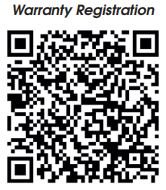
CHANNEL FREQUENCY TABLE

WEATHER FREQUENCY TABLE TABLA DE FRECUENCIAS METEOROLÓGICAS
| Channel Nº Canal | Frequency Frecuencia |
| 1 | 162,550 MHz |
| 2 | 162,400 MHz |
| 3 | 162,475 MHz |
| 4 | 162,425 MHz |
| 5 | 162,450 MHz |
| 6 | 162,500 MHz |
| 7 | 162,525 MHz |
IC RSS-GEN, Sec 7.1.2 Warning Statement – (Required for Transmitters)
Under Industry Canada regulations, this radio transmitter may only operate using an antenna of a type and maximum (or lesser) gain approved for the
transmitter by Industry Canada. To reduce potential radio interference to other users, the antenna type and its gain should be so chosen that the equivalent
isotropically radiated power (e.i.r.p.) is not more than that necessary for successful communication.
IC RSS-GEN, Sec 7.1.2 Warning Statement – (Required for Transmitters w/ detachable antennas)
This radio transmitter has been approved by Industry Canada to operate with the antenna types listed below with the maximum permissible gain and required antenna impedance for each antenna type indicated. Antenna types not included in this list, having a gain greater than the maximum gain indicated for that type, are strictly prohibited for use with this device.
RF Exposure Warning Statements
The antenna used for this radio must be properly installed and maintained and must provide a separation distance of at least 53 cm (21 Inches) from all persons and must not be collocated or operated in conjunction with any other antenna or transmitter. Never transmit if any person is closer than the specified distance to the antenna.
Note that PRESIDENT does not specify or supply any CB antenna with this transceiver. While a 0 dBi gain antenna is normal for a typical installation, the above limit applies to any antenna with up to 3 dBi gain
IC RSS-GEN, Sec 8.4 / RSP-100, Sec 8.4
This device complies with Industry Canada’s license-exempt RSSs. Operation is subject to the following two conditions: (1) This device may not cause interference; and (2) This device must accept any interference, including interference that may cause undesired operation of the device.
FCC 47 CFR §15.105 Statement
Note: This equipment has been tested and found to comply with the limits for a Class B digital device, pursuant to part 15 of the FCC Rules. These limits are designed to provide reasonable protection against harmful interference in a residential installation. This equipment generates, uses and can radiate radio frequency energy and, if not installed and used in accordance with the instructions, may cause harmful interference to radio communications. However, there is no guarantee that interference will not occur in a particular installation. If this equipment does cause harmful interference to radio or television reception, which can be determined by turning the equipment off and on, the user is encouraged to try to correct the interference by one or more of the following measures:
– Reorient or relocate the receiving antenna.
– Increase the separation between the equipment and receiver.
– Connect the equipment into an outlet on a circuit different from that to which the receiver is connected.
– Consult the dealer or an experienced radio/TV technician for help.
FCC 47 CFR §15.21 Statement
Changes or modifications not expressly approved by President Electronics USA could void your authority to operate the equipment.
FCC RF Exposure Statement
This radio transmitter has been approved to meet the RF Exposure Requirements of the FCC and Industry Canada based on the following:
- – 50% Push-To-Talk (PTT) duty cycle. When operating this device using the PTT pushbutton, do not operate (transmit) the device more than 50% of the time during the course of a conversation.
– 75% Voice Activated Transmission (VOX): When using this device in VOX mode, ambient noise can inadvertently cause the device to transmit. When in VOX mode, do not operate the device in a noisy environment to avoid transmitting over 75% of the time during the course of a conversation.
This radio transmitter has been approved to meet the RF Exposure Requirements of the FCC and Industry Canada for portable use based on the following:
– When ONLY used with the Body-Worn and Audio Accessories provided with the radio and/or only approved by President Electronics USA.
– When ONLY used with the antenna provided with the radio and/or only approved by President Electronics USA.
CLARIFICATION ON TYPES OF USAGE
This radio transmitter may be used in a mobile/fixed application or as a portable handheld application. For mobile/fixed applications, an external antenna as
previously specified should be used. For portable handheld applications, the flexible antenna supplied with the device, P/N S-20, should be used.

HEAD OFFICE/SIÈGE SOCIAL: USA – 1007 Collier Center Way, ©Naples, Florida 34110
Web: http://www.president-electronics.us • Phone: +1 239.302.3100
Email: [email protected]
Download Manual PDF
President TXUS611 RANDY FCC Handheld or Mobile
CB Radio User Manual PDF Download
